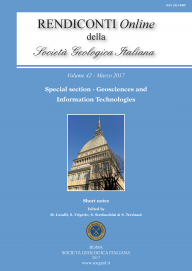
Biomass evaluation by the use of Landsat satellite imagery and forestry data
Alessandro Mei (a), Rosamaria Salvatori (a), Cristiana Bassani (a) & Francesco Petracchini (a)
(a) CNR - Istituto sull'Inquinamento Atmosferico (IIA), Via Salaria Km. 29.300, 00016 Monterotondo Staz.(Roma), Itay. Corresponding author e-mail: mei@iia.cnr.it.
Volume: 42/2017
Pages: 66-69
Abstract
Satellite imagery allows to estimate vegetation parameters related to large areas and to evaluate biogeochemical cycles and radiative energy transfer processes between soil/vegetation and atmosphere.
Moreover, the spectral indices derived from remote sensed data can be used for biomass estimation.
This paper focuses on the evaluation of above-ground biomass in the Leonessa Municipality, Latium Region (Italy) by the use of Landsat 7 ETM+ (2001) and Landsat 8-OLI (2015) data. To achieve this goal, Rural Development Programs (PSR) and Forest Management Plans
(FMP) (2001-2010) have been analyzed to retrieve the main information related to the different types of wood resources. In particular, dendrometry and prospects of different cultivation classes provide the main data such as the extension (ha), the biomass production (m3/ha), the number of plants, the cuts plan of each Forest Management Unit (FMU). This dataset was organized within a Geographical Information System (GIS) as well as Landsat images.
Landsat 7 imagery was classified with two spectral indices, Normalized Difference Vegetation Index (NDVI) and Tasseled Cup, in order to find a correlation between remote sensed data and biomass production in m3/ha. Once obtained the spectral model, the analysis was extended to Landsat 8 and the 2015 biomass map was produced and exported on the web. The results, obtained by the exclusively analysis of open source optical remote sensing data, demonstrate their suitability to update FMPs with lower cost if compared to canonical field methods. Additionally, the analysis allows to extend the investigation to un-analyzed areas by forestry studies, too.
Keywords
Get Full Text